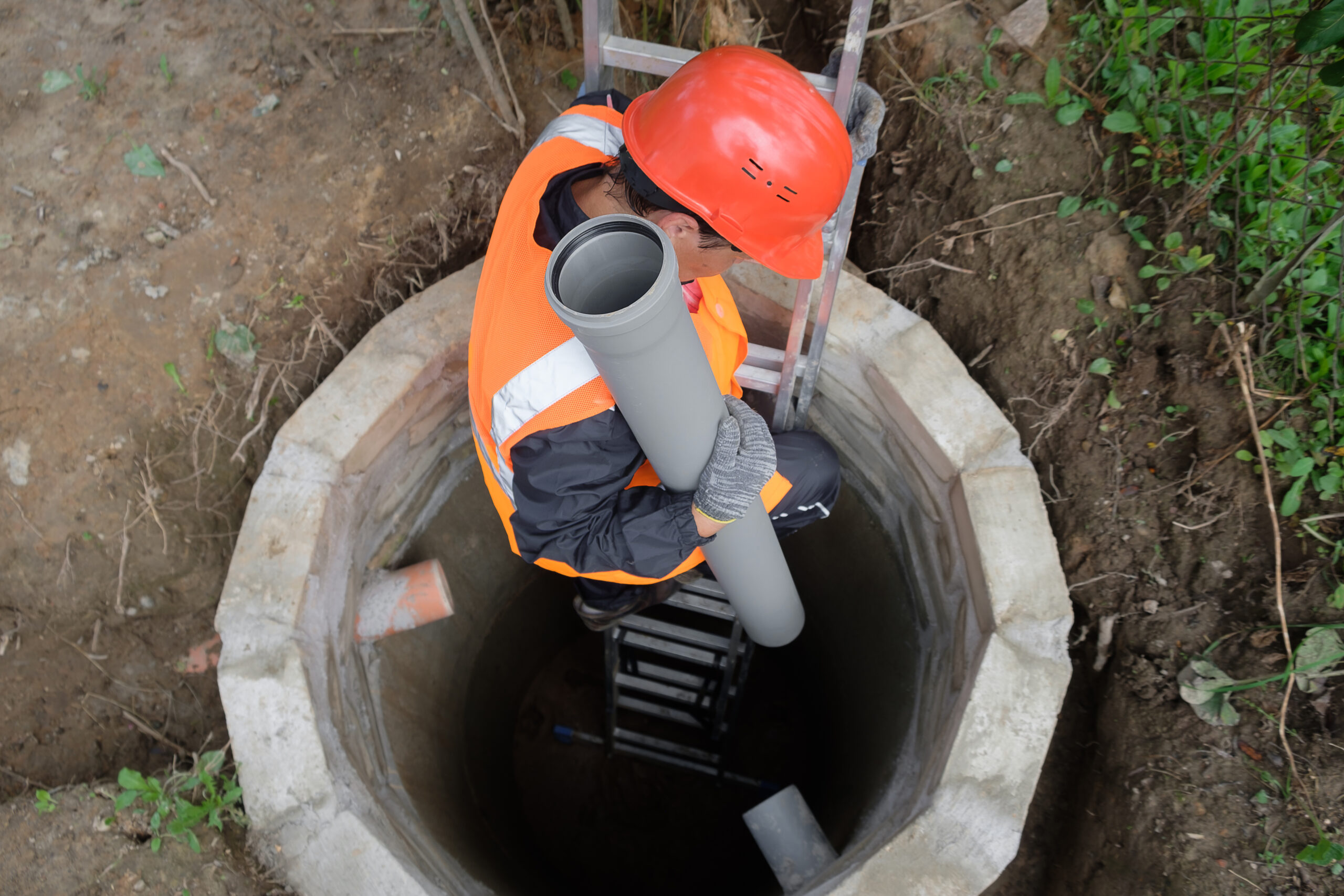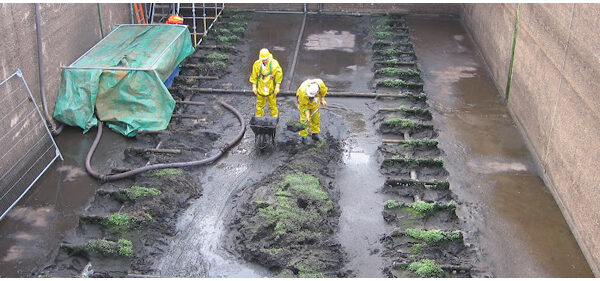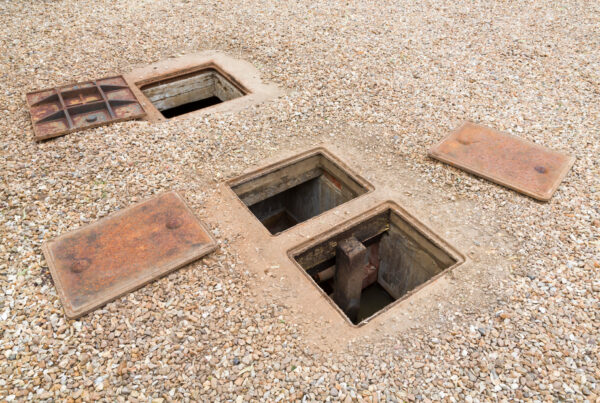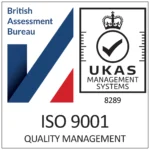We’ve all heard the horror stories about septic tank mishaps. They’re enough to make any homeowner shudder. But what if we told you it doesn’t have to be that way? With the right knowledge and a reliable local service, septic tank installation can be a breeze.
We’re here to shed light on the process, helping you make the best decisions for your home. From understanding the importance of proper septic tank installation to choosing the right local service, we’re with you every step of the way. So, let’s dive in and demystify the world of septic tanks together.
Remember, it’s not just about finding a service. It’s about finding the right service, near you, that’ll ensure your septic tank is installed correctly and efficiently. We’re here to guide you through that journey.
Key Takeaways
- Understanding Septic Tanks: Septic tanks, sewage treatment plants, and cesspits serve different waste management functions in households and businesses. Septic tanks cleanse wastewater for safe environmental discharge, while sewage plants treat it in industrial or community contexts. Cesspits store sewage for regular emptying, unlike septic tanks that allow safe wastewater dispersal.
- Considerations for Septic Tank Installation: Both the size and location of your septic tank are crucial for optimal operation. The tank size should reflect the number of inhabitants and water usage rate, while the location should adhere to guidelines that prevent groundwater contamination and provide enough space for wastewater dispersal.
- The Step-by-Step Installation Process: This involves doing preliminary site inspections, obtaining necessary permits, executing careful excavation and installation, carrying out connection inspection, and performing landscape restoration. Potential challenges could include unsuitable ground conditions, adverse weather, system non-compliance, or installation damage which can be circumvented through careful planning, consultation, and professional engagement.
- Cost Implications: The average installation cost in the UK is between £3,000 to £6,000, influenced by factors like tank size, geographical location, project complexity, and professional fees. Anticipating these costs aids in understanding financial implications and thorough project execution.
- Maintenance and Repair: Proper routine maintenance, including regular inspections, necessary tank pumping, and drain field maintenance, ensures optimal tank performance. However, issues could still arise requiring various repair costs, and understanding when to opt for system replacement over repair can save substantial costs in the long run.
- Regulatory Compliance: Adherence to England’s Environment Agency’s General Binding Rules, British Standard Specifications, Building Regulations Part H, local authority ordinances, and other required permits is compulsory for a legal, efficient, and safe septic tank installation.
Understanding Septic Tanks
Striving to illuminate the world of septic tanks, one must first grasp what they are and how they function. Diving further into the subject, here’s a look into the details of septic tanks, sewage treatment plants, and how they contrast with a cesspit.
Brief Overview of Septic Tanks
Septic tanks act as a critical player in waste management systems. Essentially, they are underground wastewater treatment structures, commonly used in areas with no connection to main sewage pipes provided by local governments or private corporations. In essence, they serve households and businesses by collecting and treating wastewater generated from bathrooms, kitchens, and laundries.
Fundamentals of Sewage Treatment Plants
Sewage treatment plants, on the other hand, apply a more complex approach to wastewater management. Unlike septic tanks, these plants treat sewage to an extent that it’s safe to discharge into the environment. Often deployed in larger communities or industrial areas, they incorporate biological, physical, and chemical processes to remove contaminants from wastewater. Simply put, they convert contaminants into harmless byproducts, ensuring the treated water doesn’t pose a threat to local ecosystems.
Differentiating Septic Tank from Cesspit
While septic tanks and cesspits can appear similar on the surface, they offer different functions. A cesspit, also commonly known as a cesspool, is a sealed underground tank that collects and stores sewage with no treatment process involved. Unlike septic tanks, it does not discharge any wastewater into the environment. Instead, regular emptying is essential to prevent overflow or leakages. On the other hand, septic tanks include a treatment process that allows for the safe discharge of treated wastewater into the ground. Therefore, understanding these variations results in making an informed choice for your waste management needs.
Considerations for Septic Tank Installation
Having delved into the crux of septic tanks, cesspits, and sewage treatment plants, let’s now explore two key considerations for septic tank installation: sizing and location.
Determining the Size of the Septic Tank Required
Firstly, sizing plays a key role in the installation of septic tanks. Underestimating the volume, and frequent septic tank emptying becomes a norm. Excessive volumes, on the other hand, might lead to unwarranted cost escalations. The sizing predominantly depends on two factors: the number of inhabitants utilising the system and the rate of water usage. For instance, a four-member family uses a larger septic tank than a couple sharing a home. Reliable agencies such as the UK’s Environment Agency or the US’s Environmental Protection Agency provide comprehensive guides on septic tank sizes. Refer to these for precise calculations.
Selection of Septic Tank Location
Secondly, the choice of location holds equal importance. Areas with a high water table or near water bodies aren’t suitable for septic tank installation, primarily because of the potential groundwater contamination risk. Also, septic tanks need sufficient space for the soakaway/leach field setup, which enables effluent dispersal into the ground. Therefore, large clearances from buildings, water sources, and property boundaries are must-haves. Local authority guidelines offer explicit instructions on acceptable distances. In essence, the optimal septic tank location aligns with these constraints, allowing effective and safe sewage treatment.
Septic Tank Installation Process
Spot-on planning precedes a successful septic tank installation, necessitating a thorough understanding of the step-by-step process. These installation steps, coupled with familiarity with potential obstacles and their solutions, lend themselves to efficient and optimal waste management.
Steps Involved in Septic Tank Installation
- Site Evaluation: A preliminary site inspection is conducted. This step includes studying the soil’s composition, slope, and water table levels.
- Permit Acquisition: An installation permit, following local regulations and environmental agency guidelines, is obtained. Households must present a blueprint of the proposed septic system for permit approval.
- Excavation: Upon permit approval, the excavation process begins, ensuring that the size and the depth of the hole match the system specifics.
- Installation: The septic tank gets cautiously placed into the hole. Connection pipes between the house and the tank get installed after this.
- Connection Inspection: A third-party inspector reviews and approves the system’s setup, ensuring it aligns with the permit’s stipulations.
- Backfilling and Landscape Repair: The excavation area gets backfilled. Any damaged landscape features are resurrected.
Potential Challenges and How to Overcome Them
Unexpected Ground Conditions: Encountering large rocks or dense soil layers can deter installation progress. Proficient planning alleviates this issue, including a comprehensive site survey to anticipate probable obstacles.
Unfavourable Weather Conditions: Weather unpredictability, like heavy rain, complicates installation. Engaging in meticulous weather forecasting, hence installing during conducive climatic conditions, counters this conceivable challenge.
System Non-compliance: Non-compliant systems with local codes present a conundrum. Regular consultation with local authorities is imperative to assure system compatibility, preventing the need for costly modifications post-installation.
Damage During Installation: The installation process often runs the risk of damaging the tank or associated pipework. Ensuring professionals conduct the installation goes a long way towards evasion of such a predicament.
Cost Implications of Septic Tank Installation
Switching from your discussions about the vital nature of septic tanks and the essential steps involved in their installation, let’s examine closely what it financially implies to install one.
Average Cost of Septic Tank Installation
To install a septic tank system, one incurs an average cost in the range of £3,000 to £6,000. Yet, your expenses might cross £10,000, based on your requirements and the complexity of the project. For instance, the British Geological Survey reports that some homeowners spent upwards of £12,000 due to the intricacy of their installations.
Factors Impacting Installation Cost
When it comes to the cost of installing a septic tank, various factors come into play. The tank’s size largely determines the cost, with larger tanks necessitating a significant increase in expenses. Your geographical location also plays a part as different areas have varying installation costs. For example, installing a septic tank in rural areas typically costs less compared to urban areas.
Furthermore, the complexity of the job affects the price. Complications, such as a high water table or rocky soil, might necessitate the use of specialised equipment or techniques, thus raising costs.
Lastly, required permits and professional fees, including design, installation, and inspection expenses, also contribute to the overall cost of septic tank installation.
Calculation of Your Septic Tank Installation Cost
To assess your specific septic tank installation cost, consider the following: First, determine the size necessary for your residence. Then, factor in any complexities that might arise due to the characteristics of your proposed installation site. Remember, those complications could include the need for advanced techniques due to unique soil conditions. Additionally, research your local area’s installation costs to get an estimate of what professionals might charge in your area. Lastly, account for permit fees that local authorities will require you to pay. By considering all these factors, you can form an informed estimate of your installation cost.
Maintenance and Repair of Septic Tanks
Following a thorough explanation of septic tank installation, let’s delve into the essential aspects of maintaining and repairing septic tanks. Ensuring that these wastewater management systems function optimally involves frequent maintenance and, when necessary, repair. Let’s discuss crucial maintenance tasks, and their costs, and understand when repair becomes necessary, along with its associated costs.
Regular Maintenance Tasks and Their Costs
Routine maintenance of a septic tank involves several tasks integral to the system’s long-term performance. Firstly, regular inspections every 1-3 years, depending on the tank’s size and household’s water usage, help identify potential issues early. Inspections by professional septic service providers can detect leaks, sludge accumulation, and inadequate bacterial activity.
Secondly, tanks require pumping to remove accumulated sludge and scum every 3-5 years. The frequency of pumping depends on factors such as tank capacity and household size.
Thirdly, maintaining the drain field by avoiding driving over it and limiting water usage aids in the field’s longevity.
To quantify these tasks, professional inspection costs typically range from £60-£200, pumped services sit between £150-£300 per session, and drain field maintenance incurs minimal costs as it primarily involves diligent usage practices.
Understanding Septic Tank Repair and Its Costs
Despite regular maintenance, septic tanks can still suffer damage requiring repair. Common issues include leaks, clogged pipes, broken baffles, and inadequate bacterial activity. The exact costs of repair fluctuate based on the specific problem’s extent and the complexity of the required solution.
Leak repairs can range from £100-£500, with higher-end costs for more extensive leaks. Fixing clogged pipes can cost £150-£500, but this can escalate if replacements are necessary. Damaged baffle repairs typically cost £200-£600, and restoring bacterial activity through professional treatments can cost around £100-£200.
Deciding Between Repair and Replacement
The decision between repairing or replacing septic tanks hinges primarily on varied costs and lifespan considerations. If multiple or significant problems persist, requiring extensive repair work, replacing the tank may be a more cost-effective choice. Generally, one should consider a replacement if the repair costs exceed 50% of a new tank installation cost. Also, if a tank is nearing its average lifespan, roughly 20-30 years, replacing it becomes a practical choice over repeated repairs.
Regulations to Keep in Mind
Let’s discuss the essential regulations that govern septic tank installations. Ensuring compliance is vital, both from legal and efficiency perspectives.
Septic Tank Installation Guidelines to Follow
Understanding, applying and following regulatory guidelines is key for correct and compliant septic tank installation:
- General Binding Rules: Broadly speaking, England’s Environment Agency sets General Binding Rules for small sewage discharges, which septic tanks fall under. For instance, requirements include a maximum daily sewage discharge limit of 2,000 litres. Beyond this, an environmental permit becomes mandatory.
- British Standard Specifications: For septic tank products or systems, adherence to BS EN 12566-1:2016 and 12566-3:2005 assures good design, manufacture and testing methodologies.
- Permit from Environment Agency: If the outflow from your septic tank is into surface water like a river or stream, an Environment Agency permit is obligatory.
- Building Regulation Part H: Privy to rules regarding foul water drainage and waste disposal, Part H of the Building Regulations in England and Wales should be obeyed during installations.
- Consent to Discharge: In circumstances where discharge isn’t into a soakaway or drainage field, e.g., to a watercourse, you must obtain this permit from the Environment Agency.
- Local Authority Requirements: Some councils have specific rules regarding septic tank installations, such as a minimum distance from the dwelling or boundary. You should query your local council to ensure compliance.
These guidelines aim for minimal environmental impact, public health and safety protection, and efficient waste processing.
Conclusion
We’ve walked you through the ins and outs of septic tank installation. From understanding the role of septic tanks in waste management to knowing the key considerations for installation, we’ve covered it all. We’ve shown you how to navigate the installation process, tackle challenges, and estimate costs. We’ve also touched on the importance of regular maintenance and repairs, and the need to comply with all necessary regulations. We hope this comprehensive guide has empowered you with the knowledge to make informed decisions about your septic tank installation project. Remember, it’s not just about finding “septic tank installation near me”, it’s about finding the right service that meets your specific needs. Armed with this information, you’re now ready to take the next step towards efficient waste management at home.
Frequently Asked Questions
How close can a septic tank be to a neighbour?
Septic tanks should ideally be located at least 7 metres away from any habitable parts of the building to ensure effective operation and minimise potential disturbances or contamination risks to neighbours.
What is the alternative to a septic tank in the UK?
A package sewage treatment plant is a reliable alternative to a traditional septic tank in the UK. Like a septic tank, sewage enters the plant, and the sludge settles to the bottom. The plant then treats the effluent, leading to safe discharge.
Can I receive a grant for a septic tank in the UK?
While direct government grants for septic tank replacement are not available, cost-effective solutions such as DIY septic tank soakaway kits can significantly reduce expenses. These kits are designed for easy, budget-friendly installation.
Do you need planning permission for a septic tank?
Installing a new septic tank in a domestic or commercial property will require planning permission from your local authority. However, if you’re merely replacing an old one, there’s no need for further permission.
Can you sell a house with a septic tank in the UK?
According to Environment Agency guidelines, when buying or selling a property with a septic tank that discharges directly into watercourses, it’s important to discuss and agree on who will replace or upgrade the treatment system. This agreement should be included as a sale condition.









